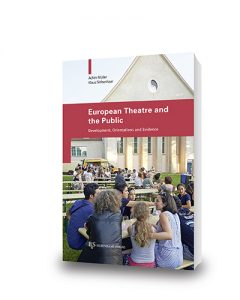Theatre in Europe has been challenged to approach and engage ever-broader parts of society in the last decades. The old aspiration that theatre is for all should finally be made true – and theatre organisations are to be responsible for it in exchange for the public funding they receive.
This book presents evidence from extensive research on the relationship between theatres in different European countries and their existing and potential audiences, collected in the project Theatron. Which audiences select which type of theatre is shown to be the result of interplay between audience preferences, theatre aesthetics and content. As an orientation for theatre practitioners, strategies and measures to enlarge the reach of theatre are evaluated. Also, a toolkit of research instruments and criteria for their implementation is provided, enabling theatres to assess the success of their strategies in audience development. Finally, the implications of a continuous enlargement of the nature of theatre as an artistic practice and as an organisation are reflected, reasserting the need both for venturing into liquid spaces of innovation and for sustaining spaces of persistence.
